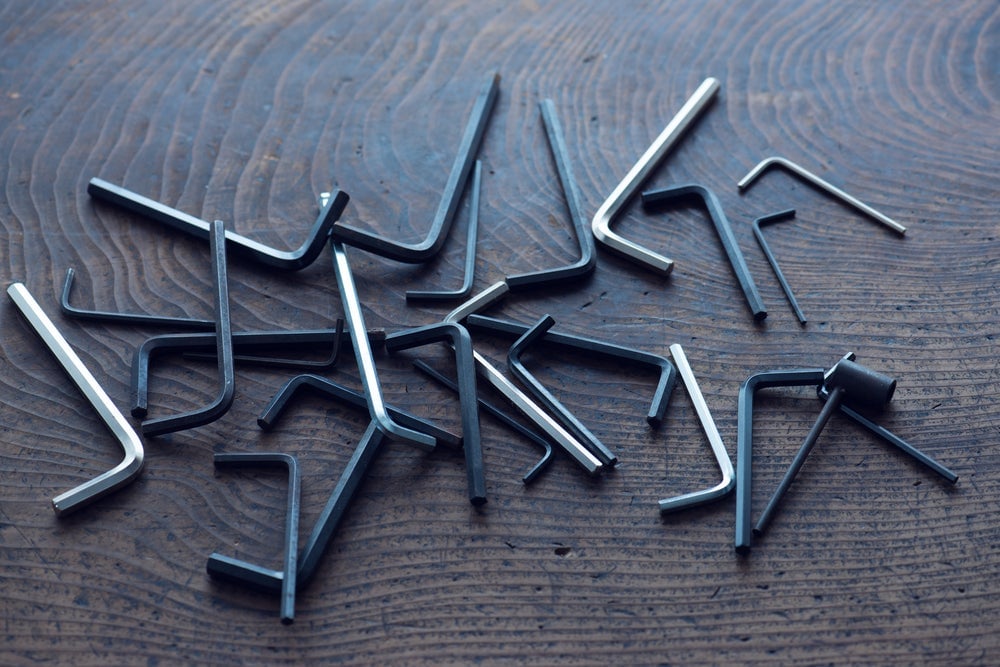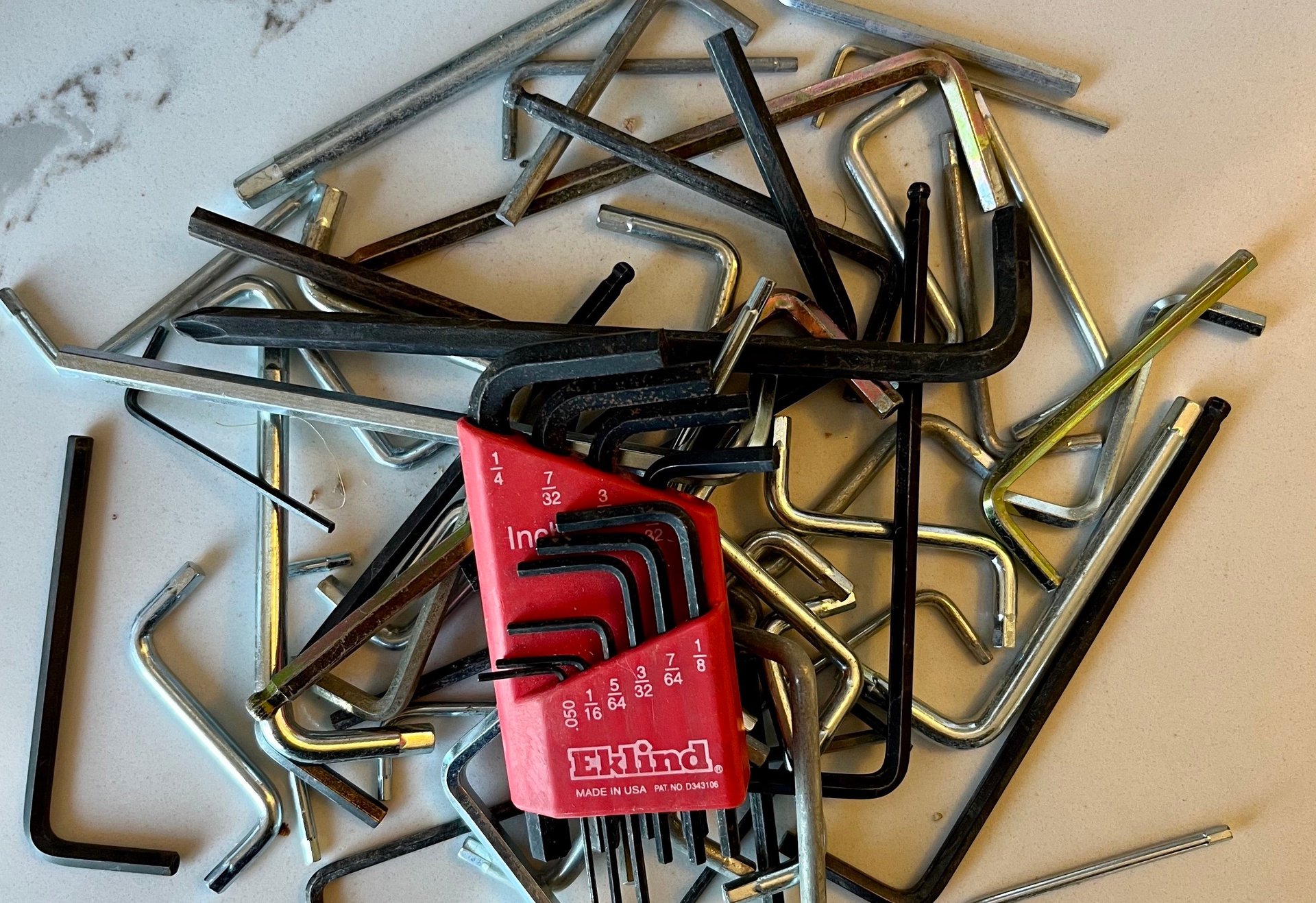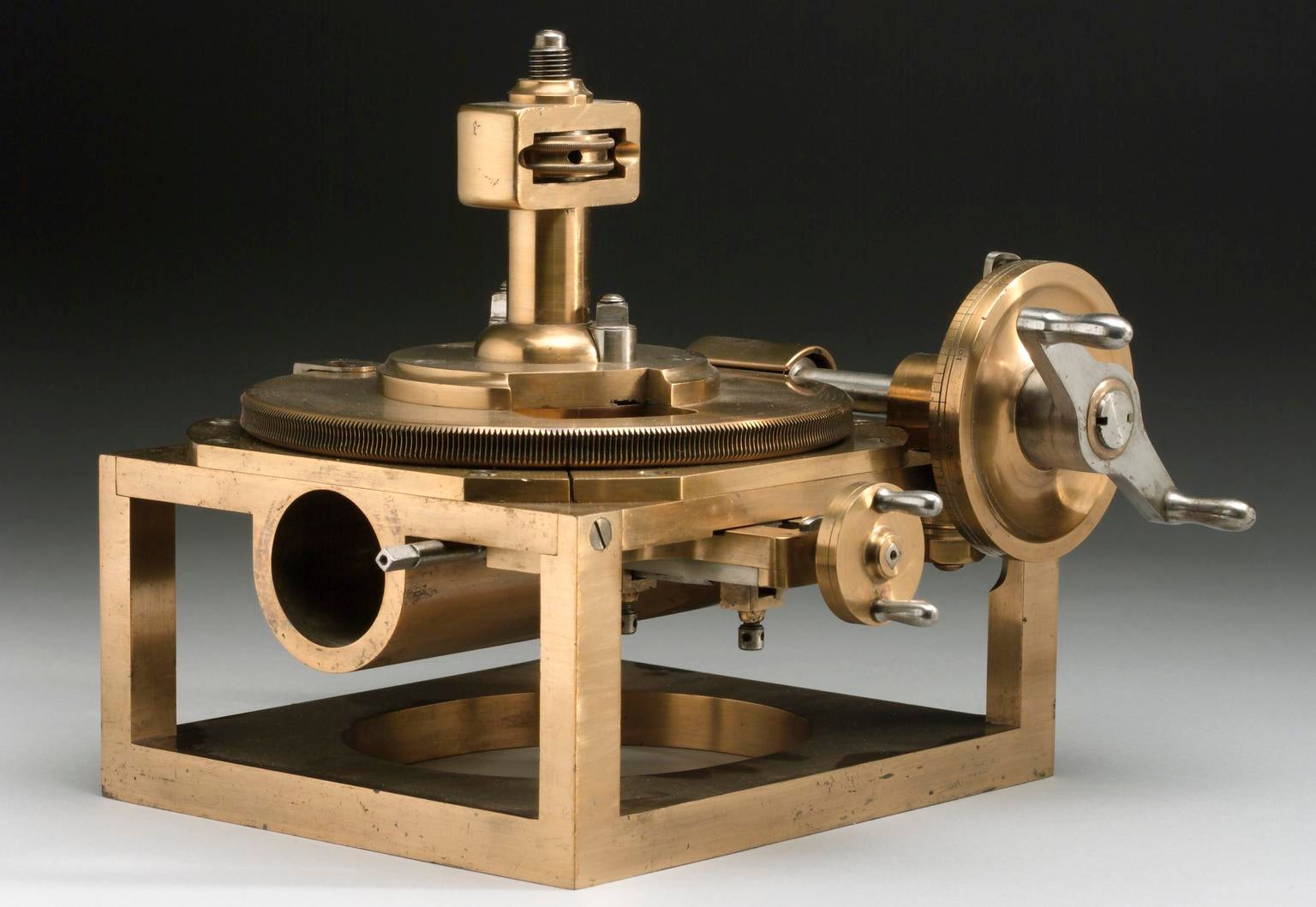Allen wrenches: Keys to safer screws
How the now-ubiquitous tool became essential to mass production.


A hex on your fastening problems
You’ve probably got a half a dozen of them at home, in drawers, toolboxes or as part of a multi-tool: a metal hexagonal prism a few inches long, often bent in the shape of an L. The Allen wrench, officially known as the hex key, is the workhorse of modern fastening, pressed into service to assemble everything from cheap particleboard furniture to expensive automobile engines. Thanks to IKEA in particular, millions of people who have never hit a hammer with a nail have spun a hex key.
But where did the ubiquitous tool come from? The history of the Allen wrench starts with its mate, the humble bolt, which exploded out of the industrial revolution and became part of the globally-standardized suite of components that could be manufactured anywhere on the planet.
Torqued up yet? Let’s get it twisted.
By the digits
17,000: Allen wrenches used in constructing a giant bird sculpture to mark the opening of a new IKEA
61 Swiss francs ($66): Cost to purchase the official nine-page documentation for global hex key standards
4 mm: Size of the hex key most commonly used to assemble IKEA products
8,000: IKEA products that ship with a hex key, according to an IKEA spokesperson in an interview with Quartz
258: Different hex keys sold at Home Depot
>$8 billion: Annual value of the fastener market in the US
A safer screw becomes a sensation
The first bolts were made by hand as early as the 15th century but began being mass produced during the industrial revolution, with the rise of steam engines, mechanical looms, and the cotton gin. By the late 19th century, metal bolts were common, but their square heads presented a danger to factory workers—the corners had a tendency to catch on clothing, leading to accidents. Fasteners with a round exterior wouldn’t snag, and so inventors hid the sharp angles necessary to turn the bolt safely in its interior, only to be accessed with the hex key. William G. Allen patented this idea in the US in 1909, and his eponymous company would become synonymous with the wrench required by his safety screws.
Hex nuts and keys became a dominant mode of fastening after World War II, when Allied countries realized the importance of having interchangeable fasteners. The International Organization for Standardization was founded in 1947, and one of its first tasks was setting a standard size for screws. Now, hex bolts and keys are used worldwide. IKEA first began using hex keys in the 1960s, and told Quartz that the simple tool embodies the concept of, “You do your part. We do our part. Together we save money.”
As for the Allen Manufacturing company, it was first acquired by Apex Tool Group, a global manufacturer that was later purchased by Bain Capital in 2013. The company discontinued the Allen brand after its sheer ubiquity made it worthless as a marketing tool. But hex keys themselves are as useful as ever, whenever there is a bicycle seat to be adjusted or a Lagkapten to be assembled.
Quotable
“The Allen wrench is the egg to IKEA’s instant cake mix.”
—Journalist Lauren Collins, in the New Yorker
The way we 🛠 now

Allen invasion
How ubiquitous are hex keys? This reporter found dozens in a cursory search of his home (and decided he could probably throw most of them out). The days of their dominance may be coming to an end, however. An IKEA spokesperson told Quartz that, “our aim is to steer towards even simpler, tool-less solutions which will reduce the time spent on the assembly and let the furniture assembly process become a joyful experience.”
Watch this!
Despite popular rumors, Allen wrenches are neither sentient nor dependent on Tungsten.
Pop quiz

Which of these is not a type of bolt used in the US before the hex bolt was invented?
A. Fin-head bolt
B. Bastard neck bolt
C. Star bolt
D. Lincoln bolt
Brief history
1568: French investor Jacques Besson builds the first mechanical bolt-making machine.
1818: Blacksmith Micah Rugg opens the first dedicated bolt-manufacturing center in the US, producing 500 a day by 1840.
1909: William G. Allen files the first patent for hex-driven safety screws, although the idea has likely been around for decades.
1943: IKEA is founded in Sweden as a mail-order catalog.
1964: John Bondhus invents the “balldriver,” a rounded end for hex wrenches that allows fasteners to be twisted at an angle.
2017: Apex Tool Group discontinues the Allen brand, four years after its purchase by Bain Capital.
Person of interest

Meet the father of that box of screws in your garage
The hex key was made possible by precision engineering, which enabled the mass production of the interchangeable parts that replaced custom-made fasteners.
The British engineer Henry Maudslay is credited with inventing one of the earliest machines to precisely cut screws in 1800, and his screw-cutting lathe allowed for large-scale manufacturing of near-identical fasteners. Something of a prodigy, Maudslay was put in charge of a workshop at age 19. He also made an early micrometer that allowed him to measure parts down to 1/1000 of an inch, which he dubbed the “Lord Chancellor” since it represented the final word on whether products met his standards. Today, screws are not cut down to shape, but instead molded from metal wire.
Fun fact!
“Allen wrench” is a proprietary eponym, a word that defies trademarking because of its ubiquity, like Kleenex, Xerox, and Velcro. The pros call this “genericide.”
Take me down this bolt hole!
What’s the best Allen wrench for your home? The consumer mavens at Wirecutter have tested out a variety of hex keys and, if discussions of fastener entry-angle and handle ergonomics are your cup of tea, check out their definitive assessment. Also: here’s every tool you need to build IKEA furniture.
Poll

How many Allen wrenches are in your home?
- 1-12
- 13-36
- 36+
- I prefer not to think about it
Count them, estimate them, put them out of your mind entirely, but whatever you do, let us know.
💬 Let’s talk!
In last week’s poll about friendshoring, 43% of you said you’d build a resilient supply chain with Frito-Lay, 39% of you chose Taylor Swift, and 18% of you preferred to make a deal with HBO Max.
Today’s email was written by Tim Fernholz (found this experience wrenching) and edited by Susan Howson (prefers to take things apart) and Annaliese Griffin (the hex key to our hearts).
The correct answer to the quiz is D., Lincoln bolt, which we made up. But the other ones were real types of bolts!